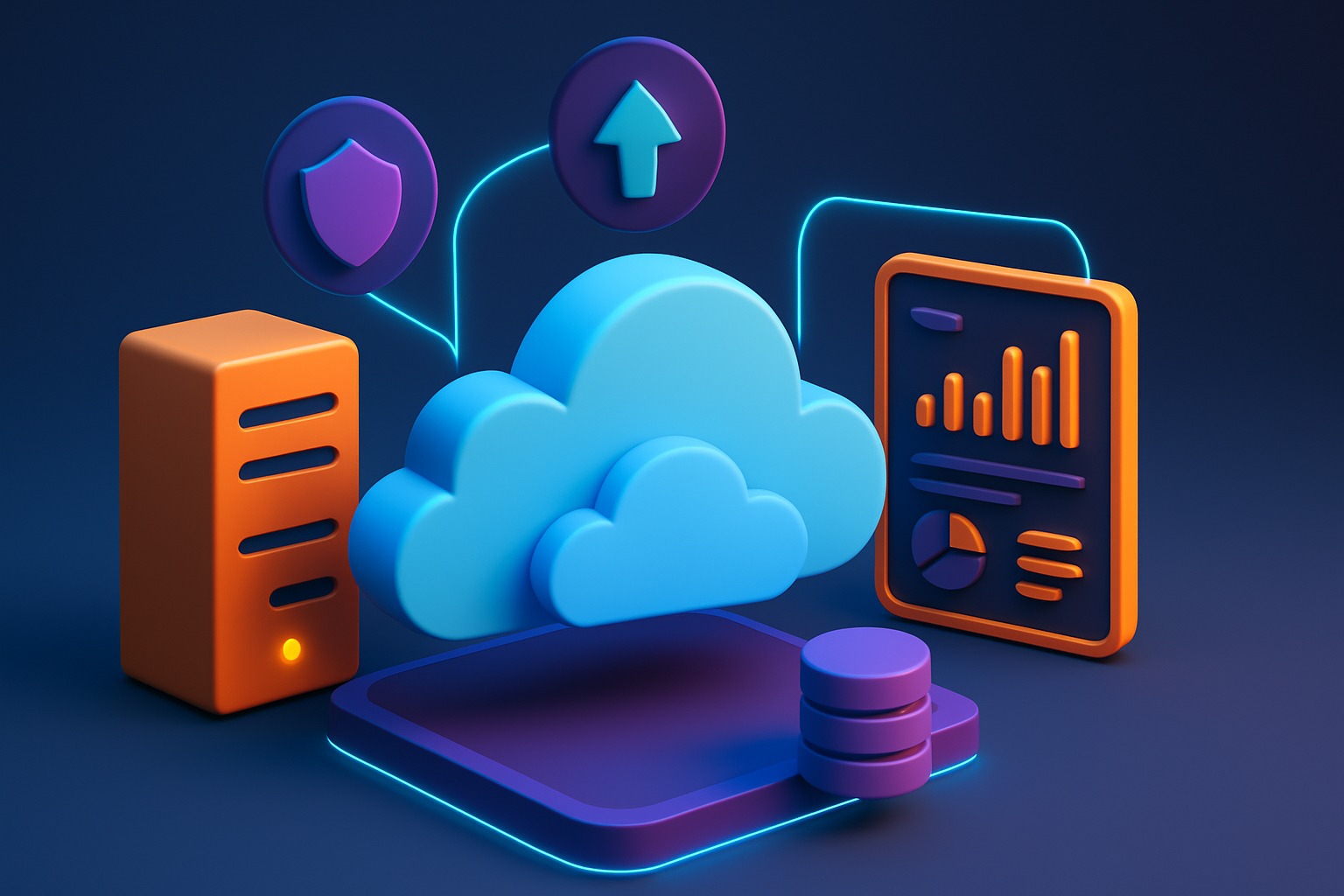In today’s tech-driven world, the term cloud computing has become a household name. Whether you’re using Google Drive to store your photos, streaming Netflix, or collaborating on documents via Microsoft 365, cloud computing is playing an essential role in transforming how we live and work. But while many of us rely on cloud services every day, understanding what cloud computing truly is, along with its benefits and risks, is crucial to making informed decisions about using it for personal and business purposes.
In this article, we’ll break down cloud computing, explore its advantages, and discuss potential risks, giving you a well-rounded view of how it’s impacting the digital world.
What is Cloud Computing?
At its core, cloud computing refers to the delivery of computing services such as servers, storage, databases, networking, software, and more—over the internet (the cloud). Instead of owning and maintaining physical servers, companies and individuals rent access to technology services from cloud providers like Amazon Web Services (AWS), Google Cloud, or Microsoft Azure.
This model offers significant flexibility, scalability, and cost efficiency, making it the go-to solution for many businesses and consumers today.
The Benefits of Cloud Computing
Cloud computing has revolutionized the way businesses and individuals manage their data and operations. Let’s explore some of the key benefits:
1. Cost Savings
One of the most attractive features of cloud computing is its cost-efficiency. By opting for cloud services, businesses can reduce expenses related to purchasing, maintaining, and upgrading physical hardware. With the pay-as-you-go model, users only pay for what they use, which helps eliminate unnecessary overhead costs.
For individuals, cloud storage options like Google Drive or Dropbox offer affordable storage plans compared to the cost of external hard drives or maintaining physical storage devices.
2. Scalability and Flexibility
Cloud services provide unparalleled scalability. Whether you’re a small startup or a large enterprise, you can easily scale your storage and computing resources as your needs grow. For example, if your business needs to handle a sudden spike in traffic or data, cloud providers can quickly adjust your resources, ensuring smooth performance without needing to invest in new hardware.
This flexibility extends to personal users as well. Need more storage for your photos or videos? You can simply upgrade your cloud storage plan with just a few clicks.
3. Enhanced Collaboration and Accessibility
Cloud computing has revolutionized how teams collaborate. With cloud-based tools like Google Workspace, Microsoft Office 365, and Slack, teams can work together in real-time, no matter where they are in the world. This level of accessibility ensures that work gets done efficiently, without the need for constant back-and-forth emails or file-sharing issues.
Individuals benefit too. Whether you’re working remotely or sharing personal documents with friends and family, cloud-based platforms allow for easy file sharing, editing, and access from any device, anywhere.
4. Data Backup and Disaster Recovery
Cloud computing provides a built-in safety net for businesses and individuals. By storing data in the cloud, you have automatic backup and disaster recovery solutions. This means that in case of hardware failure, data loss, or natural disasters, your information is securely stored and can be quickly recovered without significant downtime or loss.
This makes cloud computing an attractive option for businesses looking to protect their critical data while maintaining operational continuity.
The Risks of Cloud Computing
While the benefits of cloud computing are clear, it’s important to consider the potential risks associated with using cloud services. Let’s take a look at the most common challenges:
1. Data Security and Privacy Concerns
One of the most significant concerns surrounding cloud computing is data security. Storing sensitive data in the cloud means entrusting third-party providers with your information. Although cloud service providers implement high levels of encryption and security protocols, data breaches and hacking incidents are still possible.
Moreover, individuals and businesses must be aware of privacy regulations, especially when storing personal or financial information. It’s crucial to choose cloud providers who comply with relevant laws and offer robust security features, such as multi-factor authentication and end-to-end encryption.
2. Downtime and Service Reliability
While cloud computing offers impressive uptime, no service is completely immune to outages. Cloud service providers can experience technical issues, maintenance downtime, or even disruptions caused by cyberattacks. These downtimes can result in a loss of access to important data or services for an unpredictable period, which can impact business productivity.
For businesses, it’s essential to carefully review a cloud provider’s service level agreement (SLA) to understand their reliability and response times in case of service interruptions.
3. Vendor Lock-In and Dependency
Using cloud computing services often leads to a dependency on a specific provider, also known as vendor lock-in. Once you’ve built your infrastructure around a particular cloud platform, switching to another provider can be costly, time-consuming, and technically challenging.
To avoid vendor lock-in, businesses should consider adopting a multi-cloud strategy, using more than one cloud provider for different services. This can help mitigate the risks of relying on a single vendor.
4. Compliance and Legal Risks
Organizations must ensure that they remain compliant with local, national, and international laws when storing sensitive data in the cloud. Different regions have varying regulations regarding data storage, privacy, and transfer (e.g., GDPR in Europe).
When selecting a cloud provider, it’s essential to ensure that they comply with these legal requirements and have policies in place to safeguard your data against unauthorized access.
Mitigating the Risks of Cloud Computing
While there are risks associated with cloud computing, they can be mitigated through careful planning and security practices:
- Choose a reputable cloud provider with strong security features and a proven track record.
- Use encryption to protect your data, both in transit and at rest.
- Implement multi-factor authentication to strengthen access control.
- Regularly back up your data to avoid potential loss during downtime.
- Review service level agreements (SLAs) and ensure the provider offers guarantees for uptime and performance.
Conclusion
Cloud computing is undoubtedly one of the most transformative technologies of our time, offering countless benefits like cost savings, scalability, enhanced collaboration, and data protection. However, like any technology, it comes with its own set of risks, such as data security concerns, downtime, and vendor lock-in.
By carefully considering both the benefits and the risks, businesses and individuals can make informed decisions about how to incorporate cloud computing into their digital strategies. Whether you’re looking to streamline business operations or simply store your personal data more efficiently, cloud computing is likely to play an important role in your tech future.




